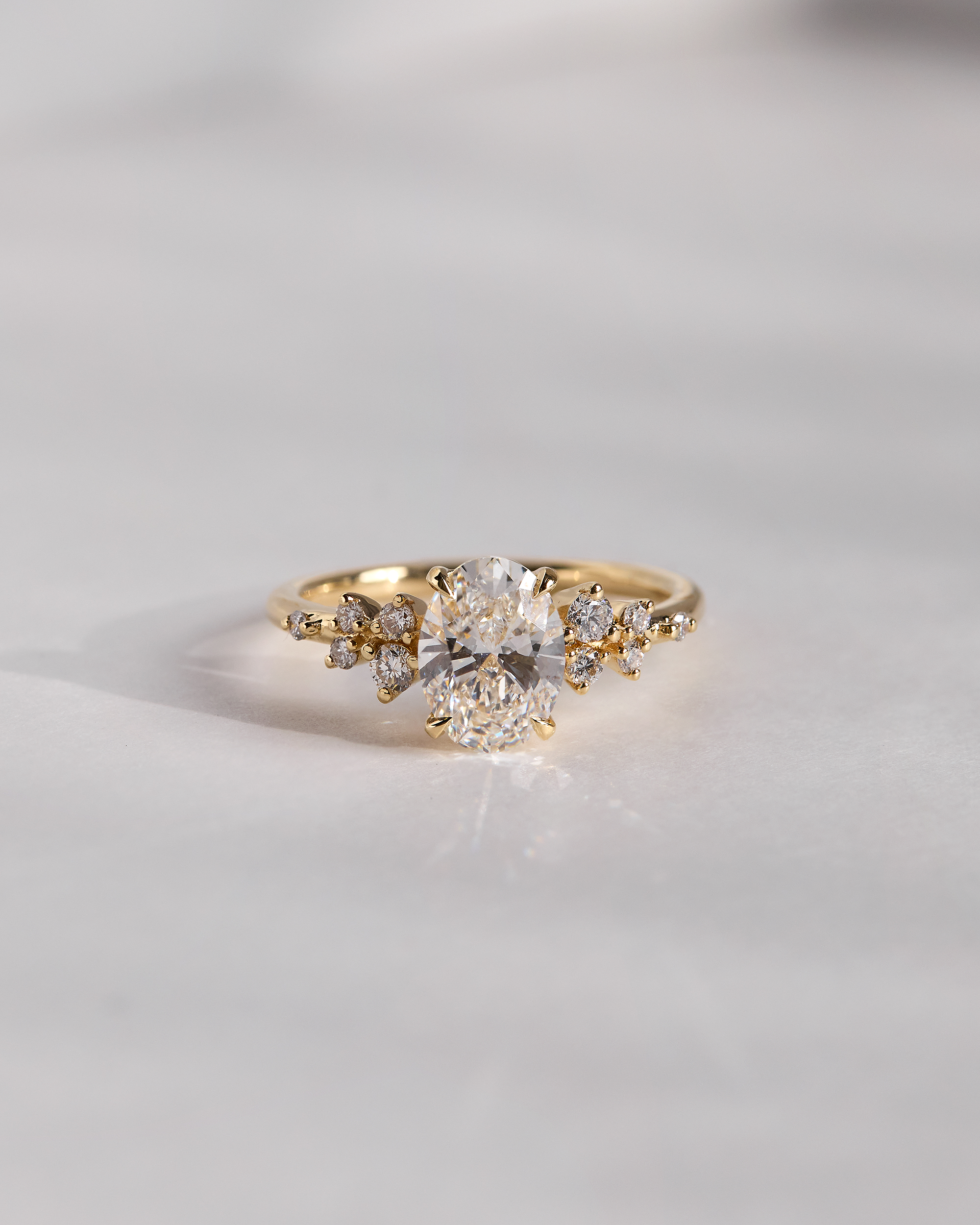
What is a lab grown diamond? It’s a real diamond identical to mined diamonds, crafted not beneath the earth’s crust, but in a high-tech laboratory. Dive into this article to understand their creation process, how they stack up against mined diamonds, and the ethical and environmental advantages they offer.
- Key Takeaways
- Defining Lab Grown Diamonds
- The Creation Process of Lab Grown Diamonds
- Ethical and Environmental Benefits
- Comparing Lab Grown Diamonds and Mined Diamonds
- Lab Grown Diamond Jewellery Options
- Identifying Lab Grown Diamonds
- The Future of Lab Grown Diamonds
- Summary
- Related Blogs
- Frequently Asked Questions
Key Takeaways
- Lab grown diamonds are identical to mined diamonds in chemical, physical, and optical characteristics, making them indistinguishable to the naked eye and just as durable and sparkly.
- Lab diamonds are created using High Pressure High Temperature (HPHT) or Chemical Vapour Deposition (CVD) , both of which mimic natural conditions to transform carbon seeds into diamonds, with CVD typically producing clearer diamonds.
- Choosing lab grown diamonds offers eco-friendly benefits by reducing the environmental and human toll of mining, as well as being a more affordable option while offering comparable quality and variety in jewellery.
Defining Lab Grown Diamonds
Lab grown diamonds are dazzling alternatives to their mined counterparts. What sets them apart? Well, despite being grown in a lab, these beauties are chemically, physically, and optically identical to mined diamonds, sharing the exact crystal structure and hardness of 10 on the Mohs scale. Crucially, they are not diamond simulants but the real thing.
Even when it comes to the all-important sparkle, both lab grown and mined diamonds stand toe-to-toe, displaying a full range of quality characteristics. So, the next time you come across a lab grown diamond engagement ring, remember, its origin might be the only difference from real diamonds.

Composition and Properties
Explore the composition of a lab grown diamond. You’ll discover it consists of carbon atoms, organised into a diamond crystal structure, mirroring that of mined diamonds. This means the physical, optical, and thermal properties of lab grown diamonds are equivalent to their mined counterparts.
What’s more, lab grown diamonds are known for their exceptional clarity and longevity, ensuring their sparkle doesn’t fade over time.
Appearance and Sparkle
Shifting our focus to appearance, lab grown diamonds are visually indistinguishable from mined diamonds. That’s right, to the naked eye, a lab grown diamond and a mined diamond look exactly the same. Both will sparkle provided they are cut well, a testament to the craftsmanship involved.
From small to large sizes, lab grown diamonds maintain high clarity and colour, contributing to their visual appeal and sparkle. So when you wear that lab created diamond jewellery, rest assured, you’re wearing the epitome of human innovation and beauty.
The Creation Process of Lab Grown Diamonds
The journey from a carbon seed to a sparkling lab grown diamond involves several steps. The answer lies in two primary methods: High Pressure High Temperature (HPHT) and Chemical Vapour Deposition (CVD) . These methods, inspired by nature’s way of creating diamonds, use tiny carbon seeds from pre-existing diamonds and mimic the mined formation of diamonds under extreme conditions.
The inclusion of specific trace elements during the growth phase can yield man-made fancy coloured diamonds, a process highly similar to natural occurrences. Each method has its unique attributes, adding to the diversity of lab grown diamonds.
.jpg)
High Pressure High Temperature (HPHT)
The HPHT method has a historical edge, being the original technique for creating lab grown diamonds, established in the 1950s. This process simulates the mined diamond formation environment by exposing a small diamond seed to conditions exceeding 1,000 degrees Celsius and 1.5 million PSI.
Mimicking nature, the HPHT method doesn’t guarantee flawless outcomes. You might find some HPHT diamonds with a yellowish hue due to nitrogen exposure, replicating the diverse colours found in mined diamonds.
Chemical Vapour Deposition (CVD)
Contrastingly, Chemical Vapour Deposition (CVD) starts with a diamond seed placed in a vacuum chamber brimming with carbon-rich gases. These gases are heated to approximately 800 degrees Celsius, leading to gas ionisation into plasma and subsequent carbon layering onto the diamond seed.
Compared to HPHT, the CVD method operates under less pressure, utilises smaller equipment, and is preferred for its ability to deliver diamonds with greater clarity and precision in proportions.
Ethical and Environmental Benefits
Opting for lab grown diamonds transcends beyond sparkle; it’s a conscious decision. These diamonds offer a sustainable alternative to mined diamonds, significantly reducing environmental impact by eliminating extensive mining operations and geological disruptions.

Moreover, certain labs have adopted renewable energy sources such as solar energy to minimise the carbon footprint during the diamond growth process. Also, lab grown diamonds ensure ethical production, providing consumers with peace of mind about the absence of human rights abuses commonly associated with diamond mining. However, the challenge remains to reduce carbon emissions in regions where fossil fuels are the primary source of energy, which Cullen Jewellery has done by offering 100% carbon neutral lab grown diamonds in partnership with Clear Neutral .
Comparing Lab Grown Diamonds and Mined Diamonds
Focusing on the aspect of value, one might wonder, are lab created diamonds worth it ? On the surface, lab grown diamonds are less expensive than mined diamonds, selling for about 70% less than a comparable mined diamond. However, when it comes to investment, neither lab grown nor mined diamonds typically appreciate in value over time. However, the lab grown diamond market is growing, with a forecasted global market volume of nearly 19.2 million carats by 2030.
Rarity and Uniqueness
Some may perceive ground diamonds to be incredibly rare. But did you know that since big diamond mines were discovered in Africa, about 7.2 billion carats of diamonds have been dug up? If we were to share all the diamonds equally among the world’s population, each person would get almost a carat!
Lab grown diamonds offer:
- Better quality
- Unique characteristics due to their controlled growth environment
- Not part of a big monopoly or made to look more scarce than they are
- Usually better quality
Lab Grown Diamond Jewellery Options
Lab grown diamonds, also known as lab diamonds, present a myriad of jewellery options, whether your interest lies in engagement rings or earrings, or you’re inclined towards vintage or halo rings. You can even create custom lab grown diamond jewellery online, selecting specific attributes such as colour, carat, shape, cut, and clarity for a personalised and unique design. For example, you can use C ullen Jewellery's ring builder to start today.
With more brands like Cullen Jewellery offering lab grown diamond jewellery, both in-person and through international e-commerce platforms, these diamonds are becoming increasingly accessible.

Identifying Lab Grown Diamonds
Discerning a lab grown diamond from a mined one isn’t straightforward. It’s not as simple as it seems. Trained gemologists use sophisticated equipment to detect subtle differences in growth morphology and unique fluorescence patterns that distinguish lab grown from mined diamonds.
Institutions like the GIA provide advanced identification technology and offer services for screening small diamond parcels to identify lab grown diamonds. Lab grown HPHT diamonds may show dark metallic inclusions and magnetic properties, whereas CVD diamonds do not, providing distinct physical indicators for identification. Lastly, grading reports and laser inscriptions found on the girdle of lab grown diamonds are crucial tools to verify a diamond’s lab grown origin.
The Future of Lab Grown Diamonds
In 2022, the worldwide market for lab grown diamonds stood at a value of US$22.45 billion. Predictions indicate that by 2028, this market's value is expected to reach US$37.32 billion. With more younger generations opting for lab grown diamonds over naturally mined diamonds, it’s clear that lab created diamonds are seen in a positive light.
While size limitations for lab grown diamonds have historically been a challenge, recent advancements are rapidly changing this, allowing for larger stones to be produced. Lab created diamonds distinguish themselves by being grown in a laboratory using cutting-edge technology, reinforcing their position as a modern choice for consumers.
Summary
From their creation to their composition, and from their value to their future, lab grown diamonds are a testament to human ingenuity and innovation. They offer a dazzling, ethical, and environmentally friendly alternative to mined diamonds, without compromising on quality or sparkle. As technology advances and consumer mindsets evolve, lab grown diamonds continue to sparkle brighter on the horizon of the jewellery industry.
Explore Our Lab Grown Diamond Engagement RingsRelated Blogs
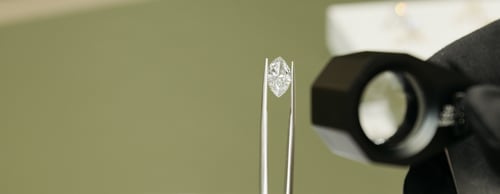
Jul 8, 2025
True or False? Debunking Common Lab Diamond Myths

Feb 26, 2025
What is the Oval Diamond Bow Tie Effect?

Jan 25, 2024
8 Reasons Why You Should Buy a Lab Grown Diamond Engagement Ring
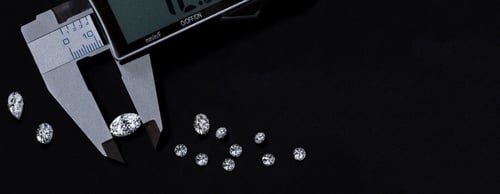
Dec 7, 2023
Are Lab Grown Diamonds Real Diamonds?

Sep 19, 2023
Exploring the Beauty of Coloured Lab Grown Diamonds
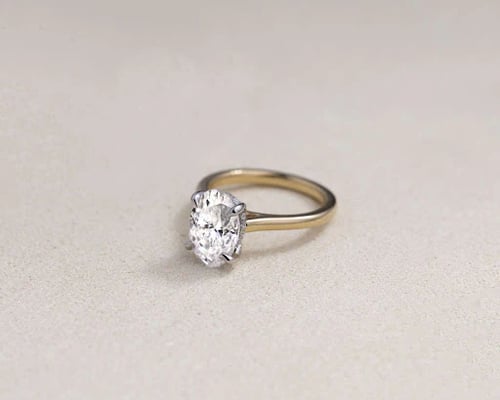
Dec 7, 2022
How Are Lab Grown Diamonds Made?
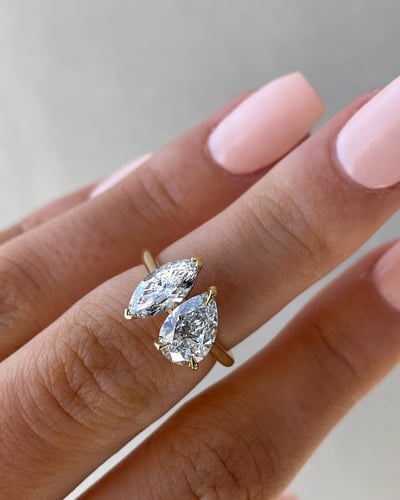
Jun 27, 2022
What Shape is a Diamond?
Frequently Asked Questions
Your questions, answered.
Yes, a lab grown diamond is a real diamond. It is chemically and physically identical to a mined diamond, grown using technology that replicates the mined diamond process. So, they are real diamonds.
Yes, lab created diamonds are worth it for their appearance and durability.
Yes, but it's very difficult as they are atomically and optically the same. A jeweller can determine if a diamond is lab created by using specialised equipment to detect differences in the crystal structure. This helps them determine whether the diamond is a mined diamond (also known as natural diamonds) or lab grown.
Lab grown diamonds are made using two main methods - High Pressure High Temperature (HPHT) and Chemical Vapor Deposition (CVD), which mimic natural diamond formation processes. These methods replicate the conditions under which diamonds are formed in the earth's crust.

Jul 8, 2025
True or False? Debunking Common Lab Diamond Myths

Feb 26, 2025
What is the Oval Diamond Bow Tie Effect?

Jan 25, 2024
8 Reasons Why You Should Buy a Lab Grown Diamond Engagement Ring

Dec 7, 2023
Are Lab Grown Diamonds Real Diamonds?

Sep 19, 2023
Exploring the Beauty of Coloured Lab Grown Diamonds

Dec 7, 2022
How Are Lab Grown Diamonds Made?

Jun 27, 2022